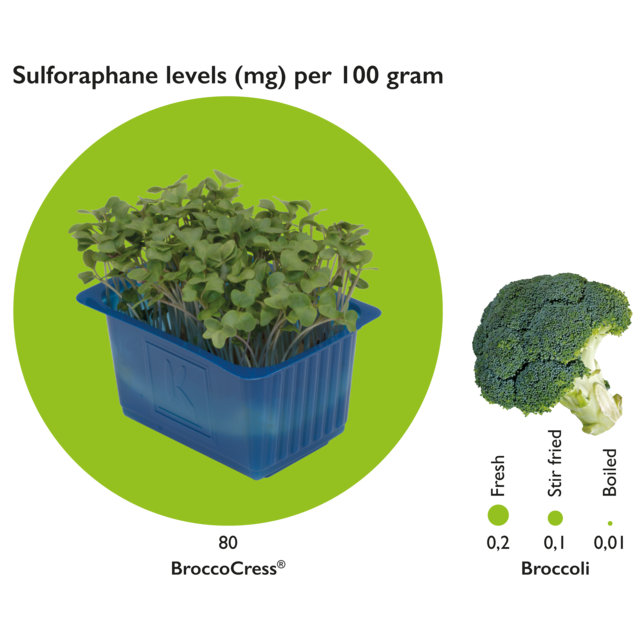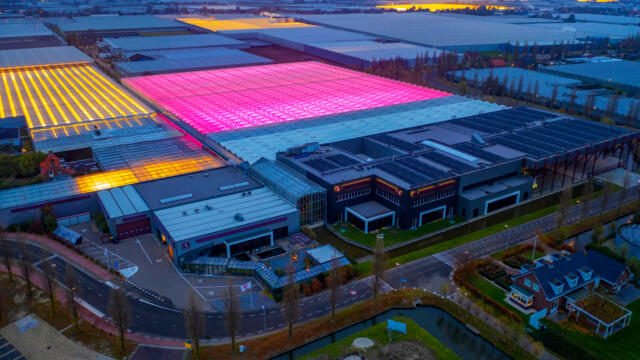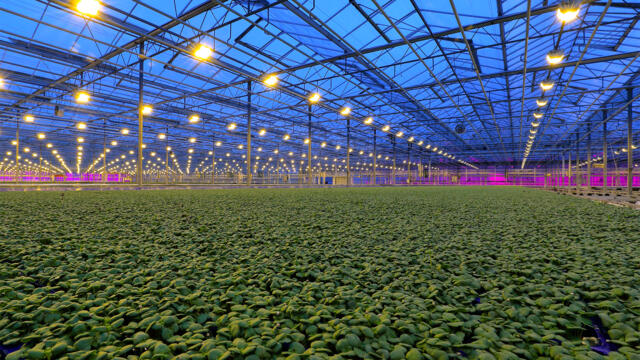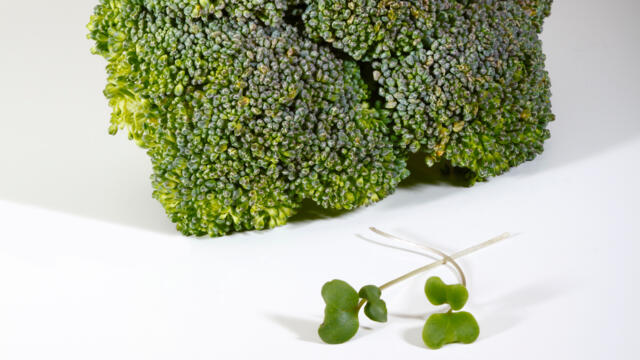
Green pharmacy
Eat plants, not pills. That is the true message of the greenhouses in the Westland area. Existing to feed the world in a healthy and sustainable way.
The Westland, The green pharmacy of the world
When people think about horticulture or the Westland they often think about picking tomatoes and getting your hands dirty. This might be true to some extent (and we are a little proud of it) but people sometimes do not realize how the sector offers solutions for several urgent social problems, among which the impending shortage of healthy food and the need for energy-neutral production methods. The polluting image is turning around, and nowadays Dutch horticulture is internationally renowned for its innovative capacity and sustainable techniques. The result: large-scale, sustainable, and healthy (for humans and the planet) food production.
In case you are already familiar with Dutch horticulture, you might’ve heard about Rob Baan, the CEO of Koppert Cress. Although he occasionally causes a stir in and outside of the sector, he strives for more health and happiness; preferably sooner than later. In collaboration with horticultural entrepreneurs, chefs, politicians, doctors, and lifestyle coaches, among others, he is working on changing the way we look at food. Aiming for: making the Netherlands the healthiest delta in the world.

Eat plants, not pills
Rob Baan: “A truly remarkable initiative is that of doctors. In the meantime, the foundation “Arts en Voeding” (Doctor and Nutrition) has been established. This is a club of 250 general practitioners who, in addition to medicine, will also provide food and lifestyle advice. Most diseases we deal with are not transmissible (such as flu, typhus, leprosy or measles), but we inflict on ourselves (obesity, diabetes2, cardiovascular disease, etc.). The founder of Doctor and Nutrition, Tamara de Weijer, has been approved by the Dutch National Action Plan Vegetables & Fruits to become ambassador on behalf of the government and the business community of fruits and vegetables. Tamara is a GP who specializes in reversing Diabetes 2. In the program 'How do I become 100', she had a patient who had spent 20 years injecting insulin. By changing the diet and lifestyle, this patient could stop using insulin within 6 days(!)."
The power of nutrition is getting more and more attention, as is also the case in the TV program 'Over Gewicht’ (English: About Weight). BroccoCress starred in one of these episodes. The episode can be seen in Dutch here and the power of broccoli is discussed further below.
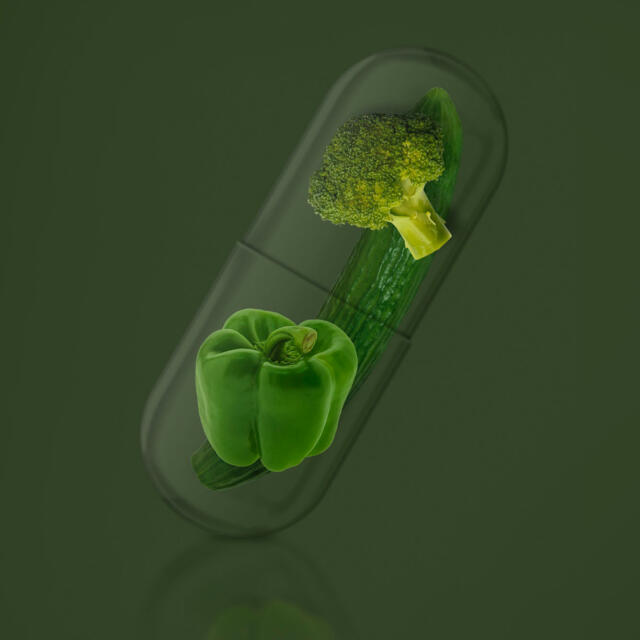
The power of broccoli
Cauliflower, kohlrabi, bok choy, kale, radishes, Brussels sprouts, watercress and red cabbage; all types of crucifers that we know well. However, this story may make you look at crucifers differently.
Rob Baan: “Cruciferous vegetables are one of the oldest types of vegetables in the world, originally found between the Euphrates and the Tigris, and in Georgia, Armenia, Iran, Iraq and Turkey. Did you know that radishes are even depicted in a fresco in Pompeii? Over time, these crucifers have found their way into many countries and are cultivated into the craziest forms. Wherever you go, you will find a different type of crucifer. In the Netherlands we often cook broccoli, but in America you see broccoli as a thick stem with a small crown, just like an asparagus. There, the broccoli plants are planted very close to each other, so that the broccoli grows upwards, towards the sun, and thus takes on a different shape than we are used to in Europe.
It has been claimed for centuries that broccoli is very healthy. If you have a nourished body, you may not notice the difference physically, but elite athletes or sick people can clearly pick up on these signals. They are used to listening carefully to their bodies. These signals are not yet measurable, but in the Western world we often only believe something as soon as we can demonstrate it. Only then will it be real.” The problem with measuring ingredients is that you immediately enter the field of pharmaceutics. Then the link is quickly made to food as medicine and that is a difficult story. After all, health is claimed by the pharmaceutical industry and not by the vegetable industry. It's time to question that.

Paul Talalay, Research to glucosinolates
Let’s make a small sidestep to the extraordinary story of Paul Talalay, born as the youngest son of a Jewish family that had to flee from Berlin to the United States in 1940. While in the USA, Talalay immersed himself in biology and his entire career revolved around researching the effects of crucifers on human health. Among many other titles and awards, Talalay became the chairman on the Department of Pharmacology in the JHU School of Medicine, one of America's most acclaimed health universities. As a result, his studies have received worldwide attention. So much so, that the Johns Hopkins School of Medicine was given the opportunity to research the health differences between West and East Germans after the fall of the Berlin Wall.
Rob: “Never before had research on such a large scale been conducted using two completely separate populations. The assumption in this study was that West Germans were healthier because the prosperity was higher. What turned out? In East Germany in particular, cancer was diagnosed considerably less than in the West. The researchers searched for explanations and looked at the consumption pattern. East Germans ate large amounts of crucifers and lots of beets, carrots, onions, and little meat. Paul discovered that the so-called glucosinolates in cabbages were very special. Back in America, he discovered that there are certain types of cruciferous plants, such as varieties of broccoli, which have a very high level of glucosinolates. If you chew glucosinolate well, another substance, sulforaphane, is released in the digestive system. This substance was already known in the medicinal world but is not found in large quantities in nature.
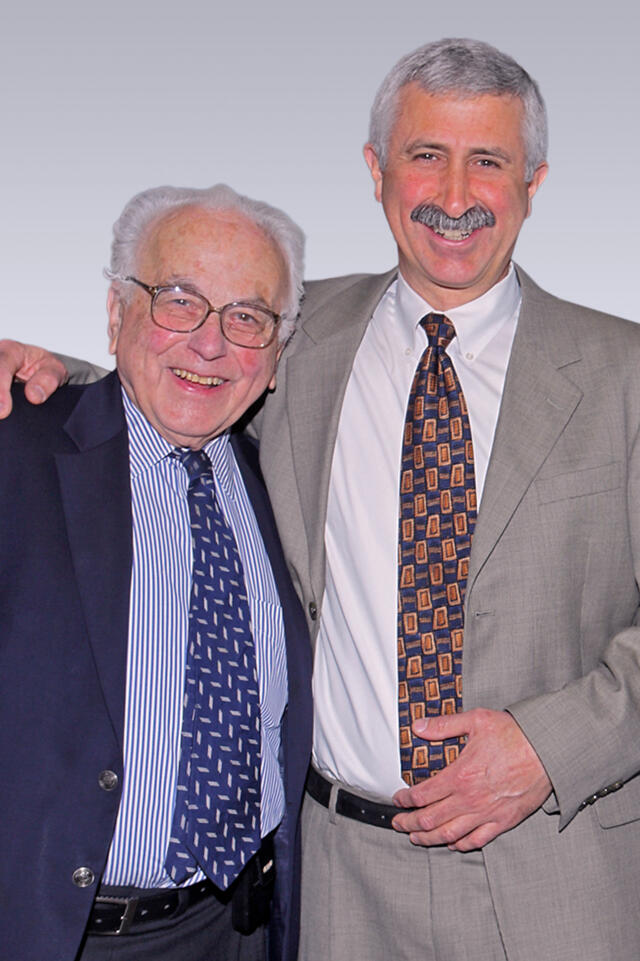
Maybe broccoli, doesn't like you either
Rob: “Glucosinolates can be seen as the defense system of a baby plant against insects. A mature plant has thorns or a sticky stem to defend itself against intruders, but seedlings do not. Nature has therefore devised another trick. This trick was demonstrated on a TV show in Japan. They had put a regular broccoli on the table next to BroccoCress, and let caterpillars walk on the table. You can see the caterpillars ignoring the cress and heading straight for the mature broccoli. These ingredients are therefore a turn-off for insects and instead are very healthy to humans.”
There are various seed breeders that grow broccoli seeds with high concentrations of sulforaphane and Koppert Cress even has plant breeders' rights to its own line of broccoli with a very high level of sulforaphane. Rob: “If you let this line of broccoli grow into mature broccoli plants, they wouldn't look pretty, but the seedling is very healthy. Make sure that when you cook vegetables, you use the cooking liquid or make a soup out of it. The glucosinolates end up in the water during cooking and you don't want to lose them when draining.”
Measuring, is knowing
Thanks to Paul Talalay and his colleagues, including renowned broccoli researcher Jed W. Fahey, we know that sulforaphane is only found in the seed of a plant and that the plant itself does not produce glucosinolates. That means everything must come from the seed. The seedlings are therefore actually small, concentrated bombs of glucosinolate that spread through the plant as it grows. The researchers discovered that the human body could not properly absorb the sulforaphane when consumed as a seed, so that was of little use. The good news is that the sulforaphane can be absorbed when presented as a seedling.
The effects of sulforaphane have been extensively studied on a variety of cancers and other diseases and inflammations. This is also reflected in PubMed, an online database of medical publications where more than 20,000 search results can be found for the word 'broccoli' alone. Despite the many studies, mainstream science, including in the United States, remains skeptical about the results. "Nutrient research is still in its infancy," Fahey says. "In the overfed countries of the world, it is better to consume small amounts of minimally processed foods with a high nutritional value than to consume large amounts of processed foods with a low nutritional value.” The bottleneck now lies mainly in the fact that, although the amount of sulforaphane in a seedling can be precisely measured with special measuring equipment, it remains a challenge to determine the concrete effects of sulforaphane on the human body.
All in all, broccoli may seem very ordinary at first glance, however, that everyday mask disguises an extremely meaningful product in the development of the Green Pharmacy.
